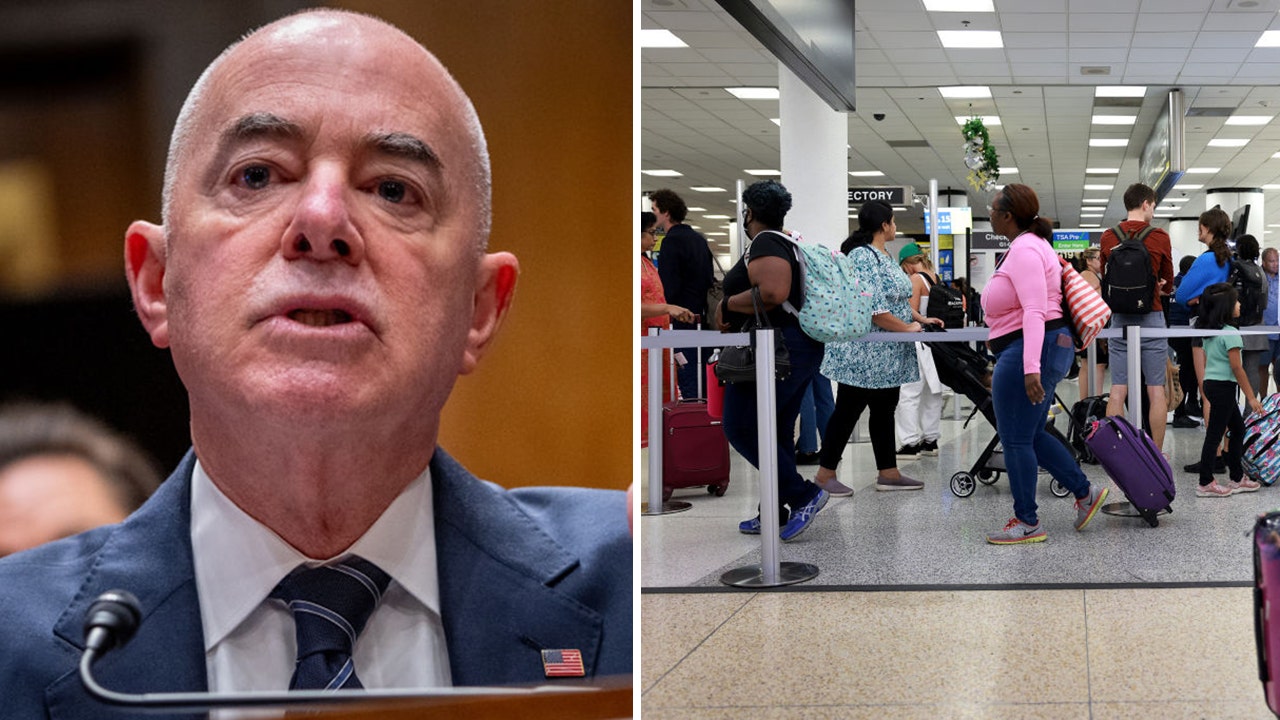World
Israel’s advanced military technology on full display during Iran's attack
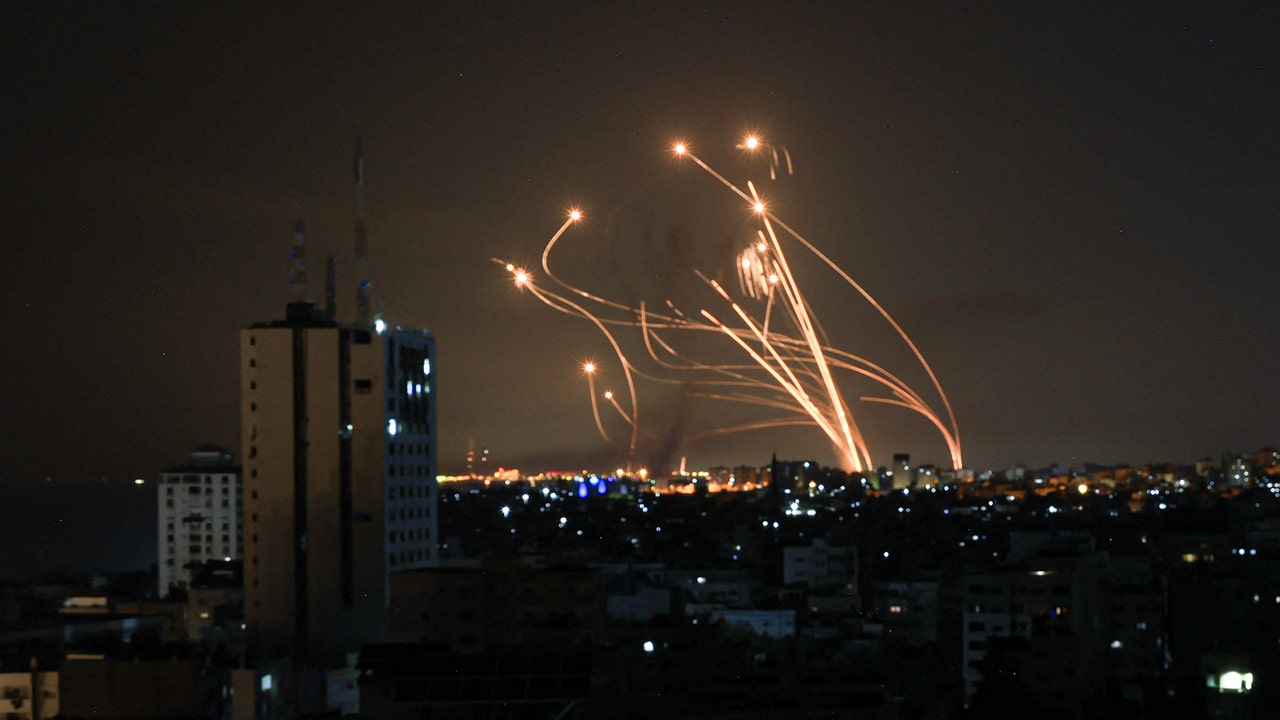
JERUSALEM — Some of Israel’s most advanced military technology was on display over the weekend when its multi-level aerial defense array led the way in striking down an estimated 99% of the more than 350 drones, rockets and missiles that were fired by Iran in an unprecedented attack on the Jewish state.
From the Iron Dome, which in its latest format uses artificial intelligence (AI) to improve accuracy when shooting short-range surface-to-surface rockets, to David’s Sling, which intercepts short- to medium-range and medium- to long-range surface-to-surface missiles, to the Arrow 2 and 3 systems, which is used for longer-range ballistic and cruise missiles, as well as AI-driven aircraft and other technology, Israel’s defensive operation proved it was far superior to the offensive capabilities of the Islamic Republic.
In a press briefing following the attack, Israel Defense Forces spokesperson Rear Adm. Daniel Hagari hailed Israel’s defensive operation, which was carried out together with partners from U.S. Central Command (CENTCOM), as a “very significant strategic achievement.” He said it demonstrated the “exceptional professionalism” of Israel’s Aerial Defense Array and the “defensive abilities of the air force as well as the army’s military and technological superiority.”
BATTLEFIELD DEMANDS SPARK AI RACE IN UKRAINE AS WAR WITH RUSSIA RAGES ON
Tal Mimran, of the Cyber Security Research Center in the Faculty of Law at Hebrew University, told Fox News Digital that broader cyber methods and even AI technology were also likely used in the successful defense operation.
“AI-powered algorithms analyze radar and other sensor data to track incoming missiles and calculate the best time to intercept these more effectively and prioritize targets,” he said. “AI makes the system more effective against a wider range of threats, like drones and other small, low-flying objects.”
Mimran said the Iron Dome, which Israel has been using for more than a decade to thwart rocket attacks from Gaza and Lebanon, now uses a “significant application of AI to improve system accuracy.”
“Using AI increases the Iron Dome’s success rate to over 90% and reduces operating costs,” he said. “This is important because these threats are becoming increasingly common and pose a challenge to traditional air defense systems, as is evident in the Russia-Ukraine war.”
Rockets fired by Hamas terrorists from Gaza City are intercepted by the Israeli Iron Dome defense missile system in the early hours of Oct. 8, 2023. (Eyad Baba/AFP via Getty Images)
Mimran also noted that over the past few months “IDF officials have acknowledged using AI-based tools for several purposes, including targeting support, intelligence analysis, proactive forecasting and streamlined command and control.”
According to Mimran, Israel’s war against Hamas in Gaza has spotlighted the IDF’s Habsora, or “the Gospel,” an AI-based system that is used to generate possible military targets for attack. However, he said, accusations that the IDF has been using AI systems to commit mass assassinations give too much credit to the AI-powered tools currently in use.
Jonathan Conricus, a senior fellow at the Washington, D.C.-based Foundation for Defense of Democracies, played down the role of AI in the weekend operation, telling Fox News Digital that while the technology is incorporated in some air force systems, “a live event with 300 incoming projectiles cannot be left to AI; there needs to be responsible human in the loop making real-time decisions.”
ISRAEL’S USE OF AI IN HAMAS WAR CAN HELP LIMIT COLLATERAL DAMAGE ‘IF EXECUTED PROPERLY,’ EXPERT SAYS

Dozens of Israeli Air Force planes were deployed to intercept UAVs and cruise missiles launched from Iran over the weekend. (IDF Spokesman’s Unit)
“I know that senior air force personnel were involved in controlling every aspect of this,” said Conricus, a former IDF spokesperson for the international media. “I find it hard to believe that any significant part of the targeting done [over the weekend] was done with AI.”
He said that over the past six months – since Oct. 7 when the Palestinian terror group Hamas carried out a brutal attack in southern Israel, sparking a full-blown war in Gaza and daily rocket fire by the militant Shiite terror group Hezbollah across Israel’s northern border, too – Israel has been forced to utilize its innovative missile defense technology.
“All of the systems have been fully operational since Oct. 7 and all have confirmed real-world hits,” Conricus said, adding that Israel’s newest layer of aerial defense, the Arrow 3 system, debuted just a few months ago by intercepting ballistic missiles fired by the Yemen-based Houthis, an extremist Islamist group that is supported and funded by the fundamentalist Islamist regime in Tehran. Both Hamas and Hezbollah are also Iranian proxies.

Israeli defense systems intercept an Iranian missile over Maale Adumim, near Jerusalem, in the early hours of April 14, 2024. (Matanya Reichman/TPS)
“I think that today what we have is a pretty solid and well-rounded air defense that deals with a very wide array and broad spectrum of incoming threats, from very small and fast projectiles like UAVs (unmanned aerial vehicles) to extremely large and lethal ballistic missiles, which are also very fast, tremendously big and carry a ton of explosives,” he said.
Iran’s attack on Sunday – the first ever directly from its soil – brought together all the different tiers of Israel’s defensive system, Conricus said.
“They are all interlinked and communicate with each other,” he said, describing how a central command office provided an overall picture of the attack as it unfolded, giving a threat assessment in real time and coordinating the entire operation with the U.S. and other CENTCOM partners.
WHAT IS ARTIFICIAL INTELLIGENCE (AI)?
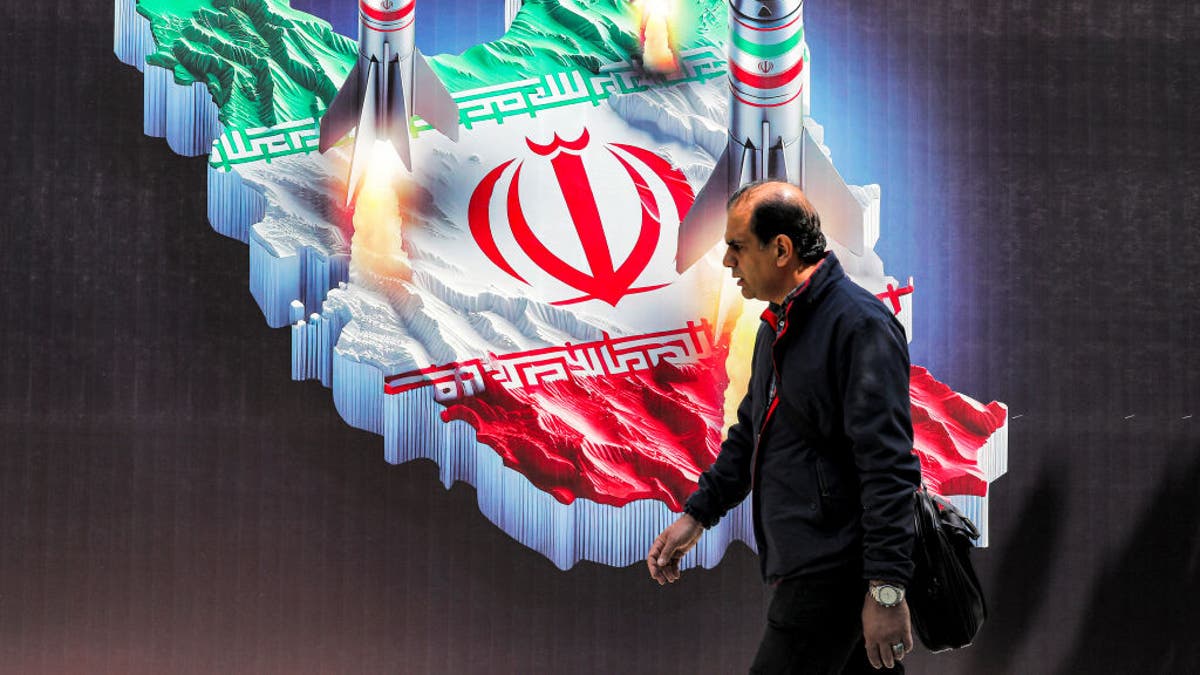
Iran on April 14 urged Israel not to retaliate militarily to the Islamic Republic’s unprecedented attack over the weekend, which Tehran presented as a justified response to Israel’s recent deadly strike on Iran’s consulate building in Damascus, Syria. (Atta Kenare/AFP via Getty Images)
Conricus said that while many of the innovative defense systems were created by Israel, “a large part of the development was also carried out with the Americans,” allowing “the radar systems and the digital intercepting systems” to communicate with U.S. defense systems.”
“They were developed together with congressional funding and support,” he said, explaining that there were “a lot of plug-and-play capabilities” and, if needed, the U.S. systems can easily connect with the Israeli system.
According to Israeli army estimates, Iran fired some 30 cruise missiles, 120 ballistic missiles and 170 suicide drones that carried about 60 tons of warheads and explosives combined. While most of the projectiles were shot down before reaching Israel’s borders, two air force bases were lightly hit and a 7-year-old Israeli girl was seriously injured. Forces from the U.S., British and French militaries, as well as from several countries in the region, including Saudi Arabia and Jordan, participated in the operation.
“To coordinate such an attack is not an easy task because all three weapon systems have [different] velocities and performances,” said Tal Inbar, a senior research fellow at Missile Defense Advocacy Alliance.
He said that the UAVs, mostly Iranian-produced Shahed 136s, would have been fired first because they move at the slowest pace; followed by the cruise missiles and finally the ballistic missiles, which have a relatively short flight time from Iran to Israel, depending on the launch site.

U.S. CENTCOM Gen. Michael Kurilla, left, meets with Israeli Minister of Defense Yoav Gallant amid rising tensions with Iran. (Ariel Hermoni/IMoD/File)
Inbar noted that Iran’s decision to use drones gave Israel several hours to “prepare itself to the maximum.”
In addition to deploying advanced missile defense systems and scrambling fighter planes, he said Israel also put in place some levels of cyberprotection, including disrupting satellite navigation, which is effective in stopping some of the projectiles from reaching their targets.
“Ballistic missiles cannot be jammed because they use an internal navigation system, but this is not the case with drones,” Inbar said, noting that Israelis have become used to GPS disturbances over the past six months.
Recent media reports also suggest that Israel deployed its new $1 billion spy plane, the Oron, which provided vital information that was used to track and destroy the drones and missiles in flight. The high-tech jet, which Israel unveiled at last year’s Paris Air Show, is equipped with thousands of advanced sensors. The Oron has the ability to scan vast terrain and gather an unprecedented amount of information at a considerable distance from the targets being tracked. When asked about the Oron spy plane, the IDF did not comment.

World
Good Morning America Meteorologist Rob Marciano Out at ABC News

ad
World
Arrest warrant issued for Central African Republic's former president over human rights abuses
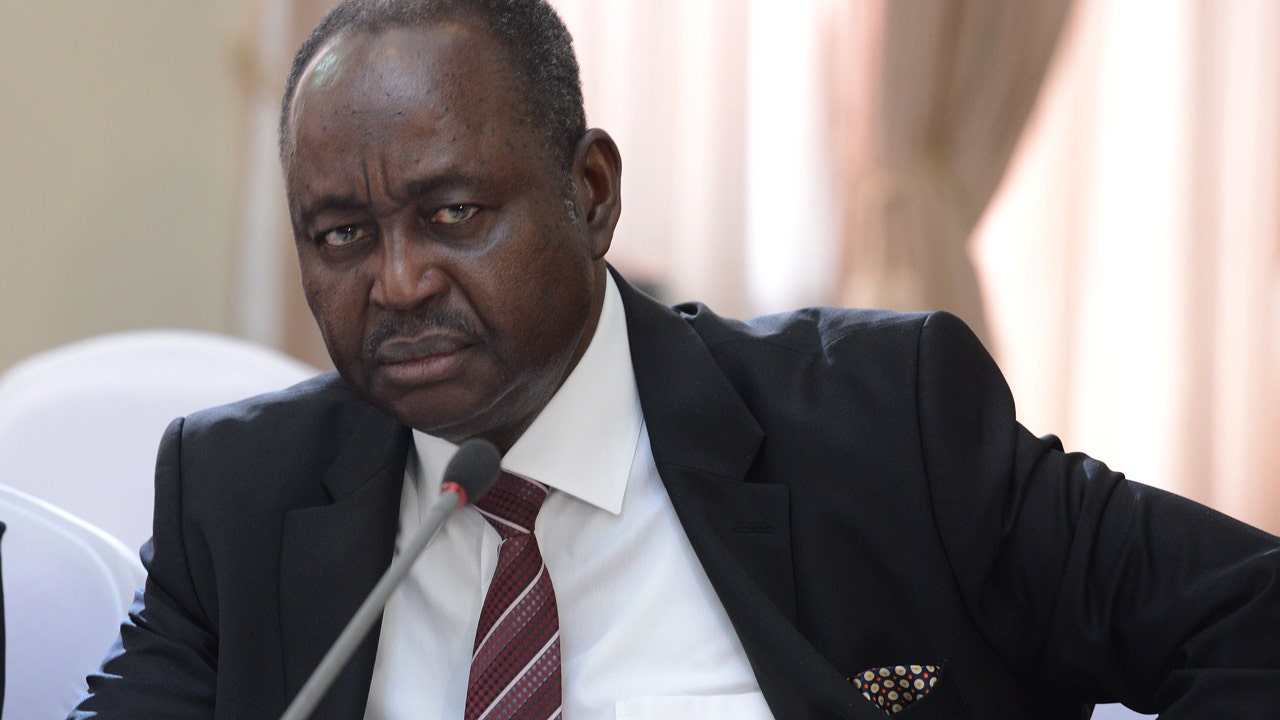
An internationally backed court in the Central African Republic issued an international arrest warrant Tuesday for the country’s exiled former President François Bozizé for human rights abuses from 2009 to 2013, a spokesperson said.
The Special Criminal Court was set up in the capital, Bangui, to try war crimes and other human rights abuses committed during the coups and violence that the country has experienced since 2003.
CENTRAL AFRICAN REPUBLIC REPORTS 10,000 CHILDREN STILL FIGHTING WITH MILITANT GROUPS
Court spokesperson Gervais Bodagy Laoulé said the warrant was for crimes committed under Bozizé’s leadership in a civilian prison and at a military training center in the city of Bossembélém where many people were tortured and killed.
A spokesperson for an internationally backed court in the Central African Republic says the panel has issued an international arrest warrant for exiled former President François Bozizé for human rights abuses. (SIMON MAINA/AFP via Getty Images)
The warrant covers crimes from 2009 to 2013 by the presidential guard and other security forces, Laoulé said.
Bozizé current lives in exile in Guinea-Bissau, where that country’s President Umaro Sissoco Embaló told the Associated Press that he had not received any request from Bangui about the arrest warrant, and that the country’s laws do not allow for extradition.
Ibrahim Nour, whose father was tortured and killed in the infamous Bossembélé prison, welcomed the arrest warrant.
“Justice may be slow, but it will eventually catch up with the executioners. That’s why I welcome the arrest warrant for the men who killed my father, and for whom we are waiting for explanations so that we can begin to mourn,” Nour said.
The court was created in 2015, but took several years to begin operating. Human Rights Watch has described its creation as a landmark to advance justice for victims of serious crimes.
Patryk Labuda, an expert in international criminal law at the Polish Academy of Sciences, told the AP that the warrant issued Tuesday sends a message about the court’s intention to prosecute wrongdoing by the state.
“This arrest warrant is certainly one of the most high profile developments in the 5 years the court has operated,” Labuda said.
Bozizé seized power in a coup in 2003, and was ousted by predominantly Muslim Seleka rebels a decade later. That led to a civil war between the rebels and mostly Christian militias marked by sectarian violence atrocities and the forced use of child soliders.
Both the U.S. and the United Nations targeted Bozizé with sanctions for fueling the violence.
The U.N., which has a peacekeeping mission in the country, estimates the fighting has killed thousands and displaced over a million people, or one-fifth of the population. In 2019, a peace deal was reached between the government and 14 armed groups, but fighting continues.
About 10,000 children are still fighting alongside armed groups in Central African Republic more than a decade after civil war broke out, the government said earlier this year.
“It’s a great day for us victims to learn that François Bozizé is the target of an international arrest warrant,” said Audrey Yamalé, a member of the Association of Victims of the 2013 Crisis. “But let’s not stop there. We would like Guinea Bissau to cooperate in his extradition.”
World
New York City police enter Columbia campus as Gaza protest escalates
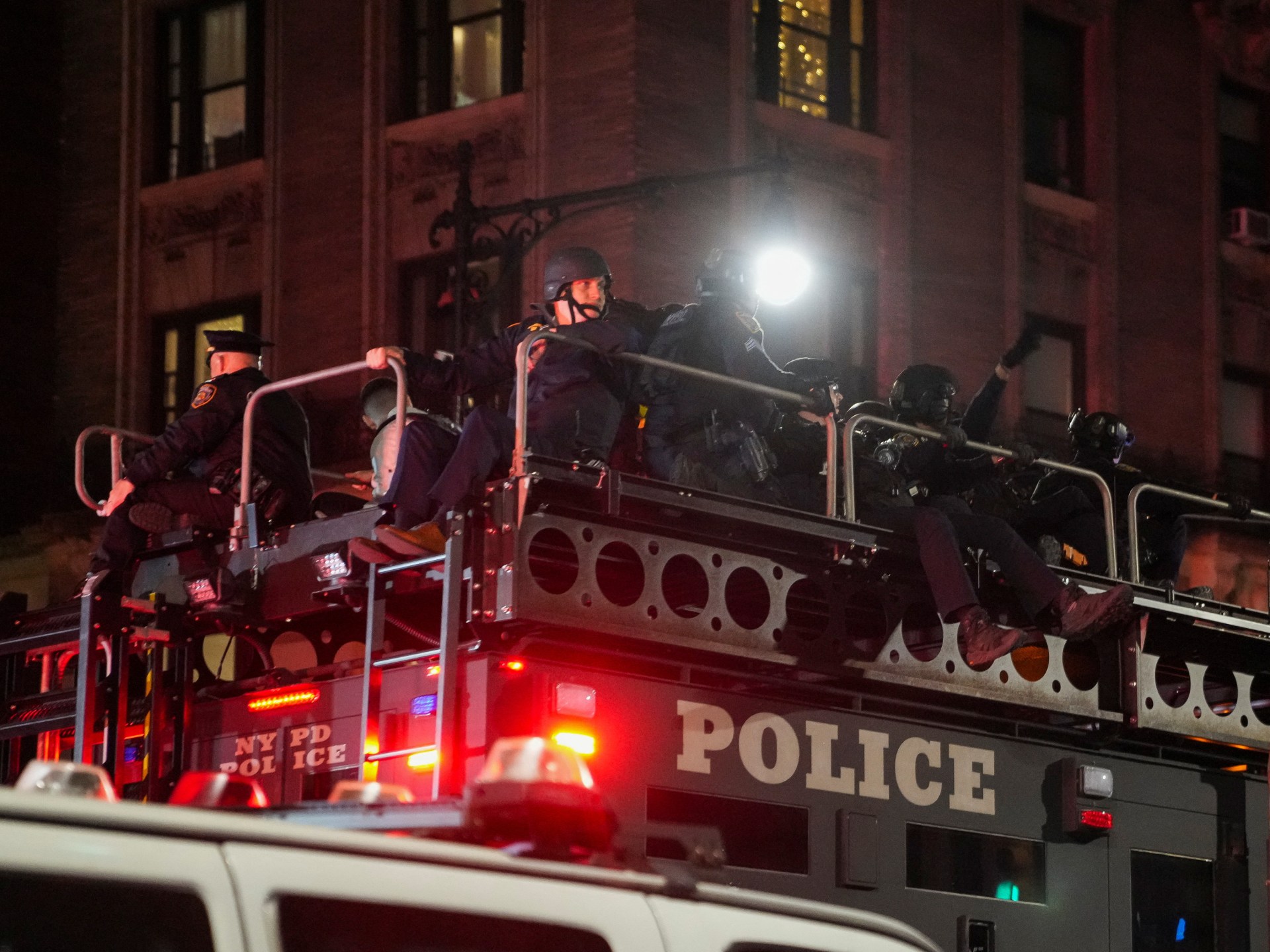
Protesters detained as police head for Hamilton Hall, which students began occupying on Tuesday morning, and the main campsite.
Large numbers of New York City police officers have entered the campus of Columbia University in the latest escalation in the Gaza protests that have swept dozens of universities, mostly in the United States.
The New York Police Department received a notice from Columbia authorising officers to take action shortly before they entered the campus late on Tuesday night, a law enforcement official who spoke on condition of anonymity told The Associated Press news agency.
Live television images showed police entering the campus in upper Manhattan, which has been the focal point of student protests against Israel’s war in Gaza, in which more than 34,535 Palestinians have been killed.
After entering the campus, some officers approached Hamilton Hall, the administration building that students began occupying early on Tuesday morning after the management said it had begun suspending students who had refused to meet a deadline to disperse on Monday.
They renamed the building “Hind’s Hall”, in memory of six-year-old Palestinian girl Hind Rajab who was killed in Gaza in February.
“We’re clearing it out,” police in a riot unit yelled as they marched up to the barricaded entrance to the building. Dozens more police marched to the protest encampment.
Columbia Students for Justice in Palestine said in a post on X that the police officers were “wearing riot gear” and that “multiple blocks have been barricaded off”.
A long line of police officers were seen climbing into the building from the top of a truck into a second-storey window. Dozens of other officers targeted the nearby protest encampment.
Shortly afterwards, officers were seen leading protesters, their hands tied behind their backs with plastic zip ties, to police vehicles outside the campus gates.
“Free, free, free Palestine,” chanted protesters outside the building. Others yelled “Let the students go”.
‘They’re students’
Dozens of protesters barricaded the entrances of Hamilton Hall after occupying Hamilton Hall on Tuesday. A student organiser who spoke to Al Jazeera said that the occupation group was separate from the group that had established a camp on the campus lawn.
At an evening news briefing held a few hours before police entered the campus, Mayor Eric Adams and city police officials alleged the Hamilton Hall takeover had been instigated by “outside agitators” who lacked any affiliation with Columbia and were known to law enforcement for provoking lawlessness.
Adams suggested some of the student protesters were not fully aware of “external actors” in their midst.
“We cannot and will not allow what should be a peaceful gathering to turn into a violent spectacle that serves no purpose. We cannot wait until this situation becomes even more serious. This must end now,” the mayor said.
One of the student leaders of the protest, Mahmoud Khalil, a Palestinian student at Columbia’s School of International and Public Affairs, disputed the claims.
“They’re students,” he told the Reuters news agency.
The protesters are calling for the university to sell off any investments linked to Israel, be transparent about its financial ties to the country, and provide amnesty from any disciplinary measures to all students participating in the rallies.
Universities across the US are grappling with growing protests at the same time as they prepare for end-of-year graduation ceremonies.
On Tuesday, police also fired tear gas at students who set up a Gaza solidarity camp at the University of Southern Florida in Tampa, according to videos from journalists and witnesses verified by Al Jazeera.
The videos also show police forces arresting two people at the protest scene.
-

 Education1 week ago
Education1 week agoVideo: Dozens of Yale Students Arrested as Campus Protests Spread
-

 World1 week ago
World1 week agoEU sanctions extremist Israeli settlers over violence in the West Bank
-

 World1 week ago
World1 week agoShipping firms plead for UN help amid escalating Middle East conflict
-

 Politics1 week ago
Politics1 week ago'Nothing more backwards' than US funding Ukraine border security but not our own, conservatives say
-

 Politics1 week ago
Politics1 week agoDemocrats hold major 2024 advantage as House Republicans face further chaos, division
-

 Politics1 week ago
Politics1 week agoFetterman hammers 'a–hole' anti-Israel protesters, slams own party for response to Iranian attack: 'Crazy'
-

 World1 week ago
World1 week agoPeriod poverty still a problem within the EU despite tax breaks
-

 Politics1 week ago
Politics1 week agoA battle over 100 words: Judge tentatively siding with California AG over students' gender identification

:quality(70)/cloudfront-us-east-1.images.arcpublishing.com/archetype/PM3O3FLF5NHSHAKOLB6F7KRFWM.jpg)
)










